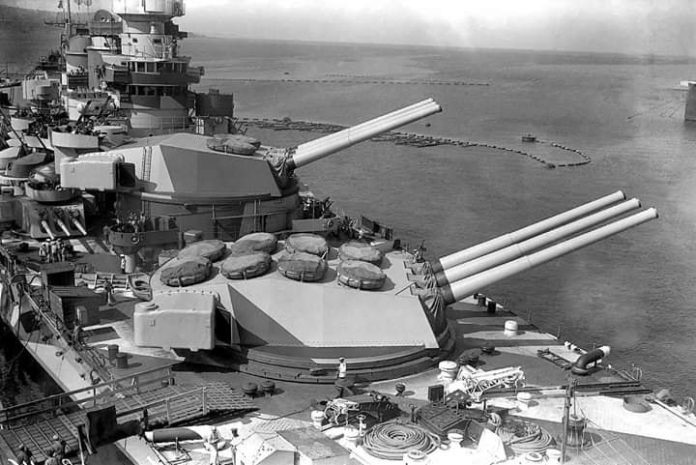During World War II, Italy built a formidable class of battleships with substantial firepower. These ships, also known as the Vittorio Vento class, were the most modern ships Italy used during the war. This class consisted of four ships: the Littorio, Vittorio Vento, Roma, and Imperio. But only the first three ships of this class were completed, The National Interest reports.
Nazi Germany’s “Bismarck” and “Tirpitz” and Imperial Japan’s “Yamato” and “Musahsi” are recognised as some of the most famous battleships of the war, but Italian counterparts should not be discounted.
In the early 1920s, the signing of the Washington Naval Treaty, drawn up by the major World War I allies, allowed the signatories to build ships of increased tonnage. Paris and Rome received an additional 70,000 long tonnes of total capital ship tonnage.
New possibilities led to the construction of ships of the Littorio type. The Ship Projects Committee was commissioned to prepare plans for the construction of two large battleships to meet modern capabilities. Littorio was officially launched in 1937, followed by Vittorio Veneto in 1940, Roma in 1942 and Impero in 1939. The first two ships of the class were slightly shorter in length than Roma and Impero.
Vessels of this class were characterised by different displacement. The displacement of the Roma was slightly larger than that of her sister ships. As Impero was never completed, we cannot estimate its final displacement.
In terms of armament, the Littorio ships were quite deadly. Each ship had three sets of three 371mm main guns and four sets of three 152mm guns in addition to a dozen 90mm anti-aircraft guns. The main belt armour of this class of ships was designed to withstand armour-piercing shells at ranges of up to 16,000 metres.
Although the Littorio class ships were built with the expectation of a powerful strike, their ultimate role during World War II was rather limited. In 1940, the British Royal Navy struck the Littorio during a raid on Taranto. The battleship was severely damaged, but rejoined the fleet in 1941. Vittorio Veneto suffered the same fate as the lead ship of the class. In 1941 and 1943, a series of Allied air attacks in La Spezia severely damaged her.
The war perhaps did the most damage to the battleship Roma. When Italy withdrew from the Axis after the fall of Mussolini, Nazi Germany became concerned about how the Allies could utilise this formidable battleship.
Immediately after the armistice was concluded, German radio-controlled Fritz Z bombs were used to destroy the ship. Within minutes, the Roma capsized and broke in two. Less than 600 sailors out of the nearly 1,900 on board were able to escape the attack.
For more than six decades, the ship’s resting place was never found. It wasn’t until 2021 that the wreck of the battleship was discovered about 19 miles off the northern coast of Sardinia.
